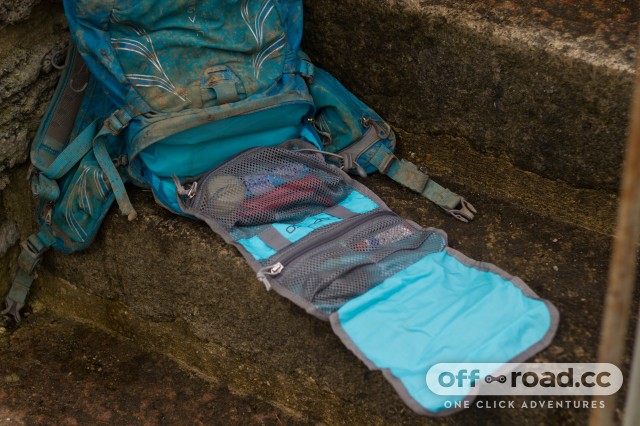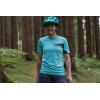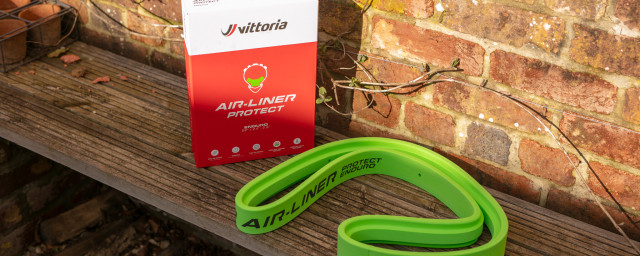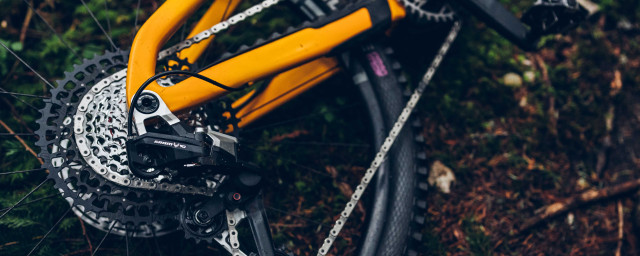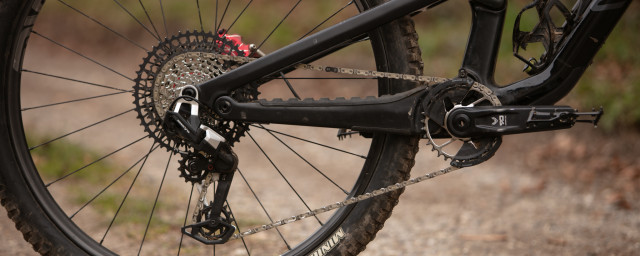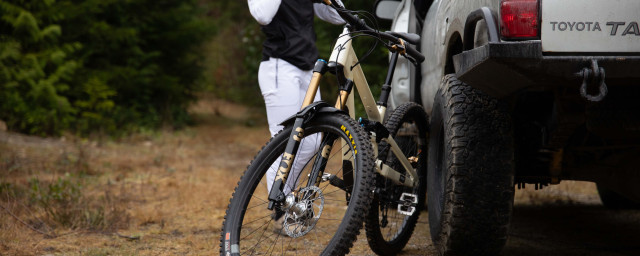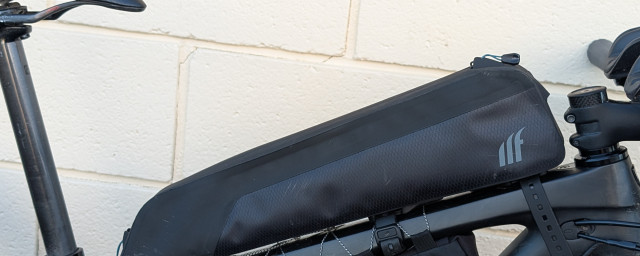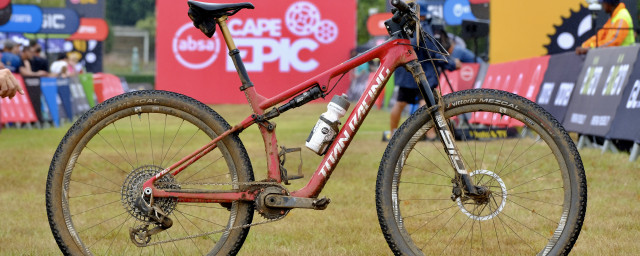Buyer's guide to hydration packs for mountain biking - best bags for trail riding

Unless you prefer to travel light, a riding pack is an essential bit of kit for carting around all the kit, food and water you need for a ride. Our buyer's guide delves deep into the features of what constitutes a good bag, the considerations you’ll need to make prior to your purchase and the factors that could affect your ride.
- Feature - Top tips for riding without a pack
- Osprey Raven 10 hydration pack review
- Buyer's guide to waterproof mountain bike and gravel jackets
[Updated 16th March 2020]
What sort of pack do I need?
As it says on the tin, a hydration pack is a rucksack carrying the necessary means to keep you hydrated, usually via a bladder in the bag and tube to get the water from said pack to your mouth. The first question then is, how hydrated do you need to be? That will all depend on the type, duration and intensity of riding that you normally do. With this in mind packs normally fall into one of three categories:
The Lightweight Pack
Holds about 1 litre of fluid and the bare essentials in tools, plus your car key. These would be suitable if your normal ride is of an XC nature, averaging about an hour in length and where you want to keep weight at a minimum. A good example is the Camelbak Chase Vest.
The Trail Pack
Most commonly seen out and about, this pack will hold 2 litres of water and there is enough room for tools, snacks and waterproof layers. This size of pack is good for rides of 2-3 hours. They will look something like this Evoc CC6L.
The All Day Pack
As alluded to in its title, this pack is for all day adventures. It will usually have about 10 litres of internal storage, plus room for a 3 litre bladder. You’ll find plenty of space for all your tools, waterproof, extra layers and a big lunch. Look at this Osprey Raptor for an idea of the size.
Or if you need everything and the kitchen sink, something the Osprey Syncro 20 will swallow all your gear, maps, a first aid kit and plently of food and water too. This'd be a good pack for an overnighter!
- Polaris Bikewear Aquanought waterproof hydration pack review
- Camelbak Mule LR 15L Hydration Pack
- USWE Zulo 2 hydration belt review
- CamelBak Solstice LR 10 women's hydration pack review
- Osprey Raptor 10 Hydration Pack
Fit
To ensure a comfortable ride, the most important thing when looking at pack options is the fit. There are few things worse than a bag rubbing or slipping across your back when you ride. The thing that is worse is a pack that bounces around, hitting you in the head, lower back or both. Not only is this uncomfortable it can affect your enjoyment as you career down your favourite trail, it’s also pretty off-putting!
To combat this the hydration pack experts have come up with a few features to keep packs still and under control. First off is the wide hip belt. A hip belt of any sort is a must have when it comes to a riding bag. It secures it around your waist and prevents it from moving up your back or away from your body. Hip belts with wider sections towards the body of the pack are ideal as they stabilise the bag. In addition, these wider belts usually double up as pockets for your snacks – win win!
Aside from the over the shoulder straps and the hip belt, hydration packs are also held in place by a smaller chest strap. Look for a chest strap with a large amount of adjustability in height to ensure it sits comfortably across your chest.
More recently some manufacturers have been opting for a pack where the bulk of the weight is being kept low in the pack. These will be named ‘lumbar reservoir’, ‘low rider’ or similar. The idea behind this design is to help keep the centre of gravity of the pack and there more the rider low, leading to a more stable ride.
Some packs are moving away from the classic over the shoulder pattern and are steering towards using a ‘cross-over’ design where the main shoulder straps of the pack meet in the middle of the chest in an ‘x’ shape harness, negating the need for the chest or waist straps. This attempts to keep the pack secure and close to the body with less faff.
As a general rule you will need to look for (and try on) packs that are a good length and width for your body with straps that hold it in place well, given the amount of kit you will be carrying. For example, it’s not so necessary for a bag designed to carry just water and keys to have a wide hip belt.
- Dakine Session Hydration Pack
- Source Hipster 1.5L hydration pack
- Dakine Hot Laps Stealth waist pack review
- Camelbak Chase bike vest review
- Dakine Hot Laps 5L waist pack review
Ventilation
Packs can be hot to wear, there is no getting away from that. Nowadays though, manufacturers are putting a lot of time and effort into ventilation and designing packs that keep air flowing between you and the bag. For example, Osprey’s Synchro 12 uses a back frame to hold the bag away from your back. Other brands do similar things, so check out the rear panel and straps of the bags on your wish list and find the one that provides big channels to direct air or uses lots of mesh fabrics to keep things cool.
Storage
Now it’s time to ask the question – what will you be carrying with you? If the answer is ‘a lot’ then a bag with well designed and laid out storage is a must. Being able to lay your hands on the right snack, or tool when you first delve into the bag is a small but important detail to make your ride go smoothly. Rummaging around in a bag, looking for your Allen keys, on a wet and windy day like you are Mary Poppins delving into her bag for the umbrella will not go down so well with your mates.
Manufacturers such as Camelbak and Osprey are currently producing packs with designated tool rolls, a feature we love. Most bags will have enough storage pockets for all the normal things you carry. Check out each one and imagine where you’d put your kit – does it all fit? Remembers features such as a fleece pocket for riding glasses and a hook for car keys are valuable additions.
Bladder
Most hydration packs will come with a bladder (also commonly called water reservoirs) designed to be used alongside it, meaning it will be the right size, fit well inside the pack and ensures that the weight distribution is correct. Although they function in pretty much the same way, brands all differ slightly in terms of rigidity, opening/closure and in the design of the bite valve. Whichever you choose though, we don’t think it will be a deal breaker and you will become accustomed to the design quickly.
Years of riding bikes and testing kit has led us to be firm believers in the necessity of a pack with separate bladder access. Some bags are designed in a way that the bladder is accessed from the main bag compartment and in others there will be an extra external ‘pocket’, usually with a zip fastening to the rear to hold the bladder. You will only need to fight to insert a bladder in the former type of bag when both are full to realise that this is futile, before needing to remove all contents and totally repack the bag to include the bladder, wasting valuable riding time. Keeping the bladder separate not only leads to a quick and seamless insertion it also means filling on the fly whilst riding is quick and easy.
Extra Features
There are a few extra features available on some packs that just make life that little bit nicer. A waterproof cover is one of them, as packs are rarely made from fully waterproof material and this feature can be a soggy sandwich lifesaver. Usually stored in the bottom panel of the bag, it’s invisible when not in use and easily whipped out in an emergency.
A helmet holder or straps designed for this purpose can also be pretty handy, either for storage whilst walking or travelling or for carrying both a full face or half face helmet whilst you ride. Although this might be overkill for a normal ride if you plan to do any enduro racing where full faces are compulsory you might need it.
Some larger packs are designed to hold removable back protectors. If you don’t mind carrying the extra weight (we are only talking 200g for the above SAS-Tec Spine Plate from Ion), then this is a great idea to not only protect you from rocks and rough terrain during a fall but all to prevent any of those pointy objects in your pack from causing damage to your back!
Five things to look out for in a trail pack
The Last Word!
Before you dive in and press the ‘go’ button on your new pack, remember to check out the following things:
- Not all packs come with a bladder included
- Lockable valves are a puddle saving godsend
- Is it woman specific? Do you need it to be? Women’s packs are usually shorter and narrower or have differently shaped straps.
Over the next month or so we are going to be testing out the best bags on the market with the above in mind and bringing you the results, in the meantime happy bag hunting!









